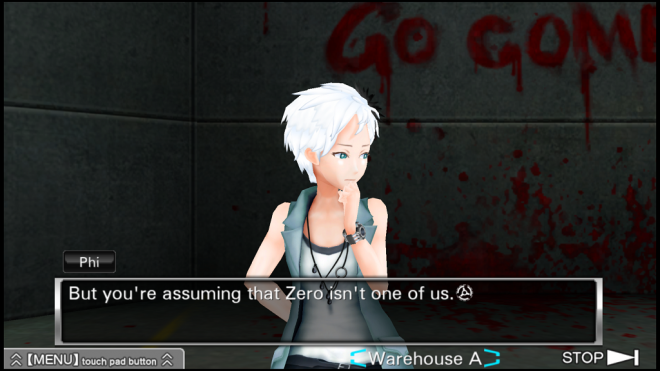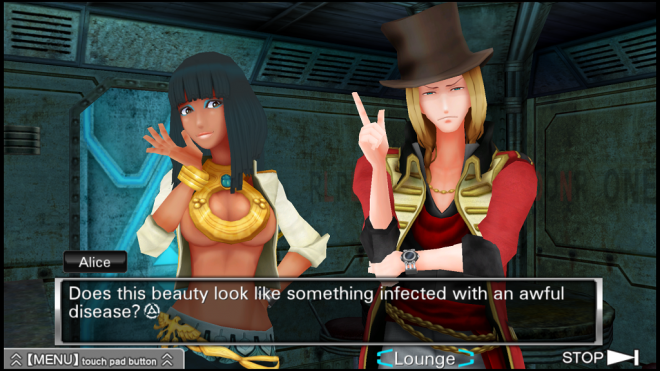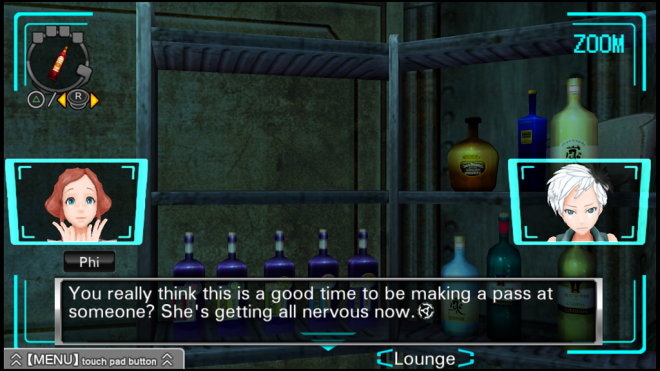Zero Escape: Virtue’s Last Reward — Sometimes, Good People Die

Note: This review contains some spoilers for 999: Nine Hours, Nine Persons, Nine Doors, though I didn’t blow the biggest twists.
The sales and popularity of 999: Nine Hours, Nine Persons, Nine Doors caught nearly everyone involved off guard, and showed how an English-speaking audience existed for Japanese visual novels. The game contained good writing (also thanks to its superb localization) and characters, and several unforeseen twists that kept the experience tense. This was one of the biggest games to lead to a stream of visual novel localizations from several publishers, in a genre that’s only become more popular since then — though it nonetheless remains niche.
After 999’s success, the visual novel I was most nervous to play was its sequel: Zero Escape: Virtue’s Last Reward. It’s part of the reason why it took me so long to finally play it — but only “part.”
Spike Chunsoft and publisher Aksys Games struck lightning in a bottle after showing a curious audience how good visual novels could be with 999, which featured some of the best twists I’ve seen in a video game’s story. But it felt like a self-contained title whose concept wouldn’t lend itself well towards a sequel, and any attempts to make a follow-up could result in a title that could be a pale imitation of its predecessor. Now that I’ve finally played it after all these years, I was glad to be wrong in that assumption. The game’s structure and themes feature a number of similarities, sure, but there are more than enough changes to distinguish it from 999.

VLR again involves nine characters whose lives are upended by the desire from a mysterious entity to have them play a game — specifically The Nonary Game. Here, characters have to escape while experiencing a number of dangerous obstacles, though within the confines of the rules set. Those rules are given to the characters by a very animated figure that identifies as Zero, provided to them after they awake to discover the mysterious bracelets on their arms. The characters have to venture through a series of doors containing puzzles on the way to their goal of escaping whatever building they’re trapped in. The concept does sound awfully similar, though not explicitly identical, to the previous game.
One key difference comes in how characters progress through and potentially escape in a different manner. One key difference involves how numbers and colors change on the bracelets as the game continues, done after playing the AB Game after completing the escape rooms. Here, characters can choose to “Ally” with characters to get two points, but picking “Betray” on someone who picks “Ally” will grant them three points, and inch them closer to 9 points on their bracelet. Nothing happens if both pick “Betray.” Reaching 9 is all that’s required to open the number 9 door and complete the game, and it only opens once.

This is the heart of where most of the story’s drama lies, in a thankfully different way compared to 999, since the rules actively encourage some characters to “Betray” others. Putting many characters with different motivations for escaping together means few of them know exactly who to trust, which helps the story maintain its tenseness throughout.
The characters themselves have ostensible similarities to the previous game’s cast, but all of them distinguish themselves — even in the case of one returning character. Protagonist Sigma isn’t as quick a thinker as Junpei in 999, but is likable on his own. I enjoyed all the characters even when — and sometimes especially when — their motivations and ambitions got the best of them in their different attempts to escape. Not that everything’s perfect here. Poor Clover returns from the second game, making this the third time she’s played the Nonary Game. But despite only being a couple of years older here, her character quirks are very different, and she’s far flirtier. She’s still one of the nicer characters… mostly.
VLR is more focused on developing the characters and exploring their actions within multiple circumstances, all of which are documented on a flowchart. Each character has their own ending, and there are several “Game Over” bad ending scenarios.

These are all influenced by the decisions Sigma makes, depending on which team he sides with while going through specific doors or whether he chooses “Ally” or “Betray” during the AB game. It’s a great way to get to know all the characters and their motives, and grants an opportunity to see exactly why some characters could not be nicer while others are jackasses. There are also reasons why some are between those character archetypes, like Phi. Some decisions are tailored to make you, the player, feel like an asshole — it was extremely rough to “Betray” certain characters, especially after making promises with them. But it’s absolutely worth filling out the whole flowchart to see what happens, because the character reactions make all the routes at least somewhat memorable.
The overall story was a good time, and contained several twists I didn’t see coming. There’s nothing on par with that twist from 999 (you’ll know what I’m talking about if you’ve played it), but a few of them come close to reaching the height its predecessor achieved. A few twists required stretching willing suspension of disbelief, even compared to some from the previous game. But this doesn’t hamper the story too heavily. Other surprising revelations made sense after thinking about them and considering the context-deprived clues I missed. This might make a second playthrough worth it, but that’s tougher to embark on when this game is twice as long as 999.

With that length, there are more puzzle rooms this time around. Several were challenging, especially those that relied on my weak spot of using math, though the game does away with problems that involve adding the root of numbers. Later puzzle rooms are especially tough, more so than rooms during the same part of the game in 999; but nothing here is insurmountable. It’s also great that no path requires doing the same puzzle rooms over again, a big problem in its predecessor — though this was alleviated with The Nonary Games version.
This game is still very much a visual novel, but features a switch in presentation for the main story. Instead for relying on 2D portraits and illustrations, it’s almost entirely a CG-driven presentation. It’s mostly good, and most animations are well done; but the developers had an easier time conveying emotion from characters in hand-drawn portraits. This is especially the case with Clover, where her portrait is smiling during unfortunate and tragic scenarios, and not because she’s insane. I wish some of those animations could have been better, but again, I liked most of them.
A fair portion of the music is reused from the first game, but VLR has its fair share of new tracks from composer Shinji Hosoe. The tracks always almost always fit the occurrences happening on-screen, so I rarely had a problem with the recycling. The English voice acting is also well done, to the point that I barely noticed how the voices didn’t fit the lip movements in either language. Sigma is unvoiced in order to let the player use their imagination and substitute their own voice of choice for his parts. It’s a bit of a surprise coming from The Nonary Games version of 999, where protagonist Junpei is voiced, but this is another issue where I didn’t have many complaints. It’s not a problem, per se, and the overall voice acting, which features a bunch of Persona series veterans, is good stuff.
I was a little worried going into Virtue’s Last Reward, because you always want a prequel to live up to its predecessor and fear potential disappointment. But I enjoyed this game just as much as 999. The pacing isn’t as good, but I had a good time exploring all the “What if?” scenarios and the more character-driven aspects of the presentation. Anyone playing this game won’t need complete familiarity with 999 to do so, but the impact of some scenes will be lost on anyone who doesn’t first. So, I recommend experiencing that game jumping into this one. They’re both visual novels well worth playing.





